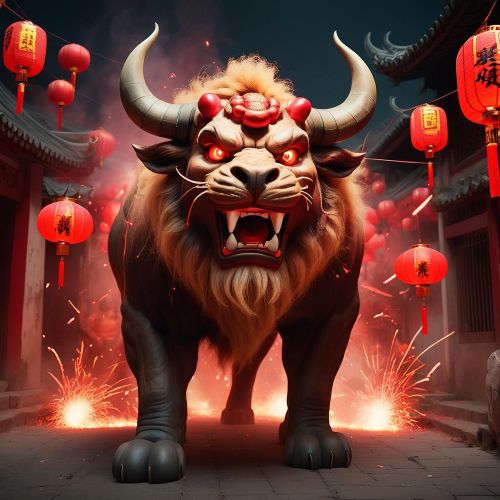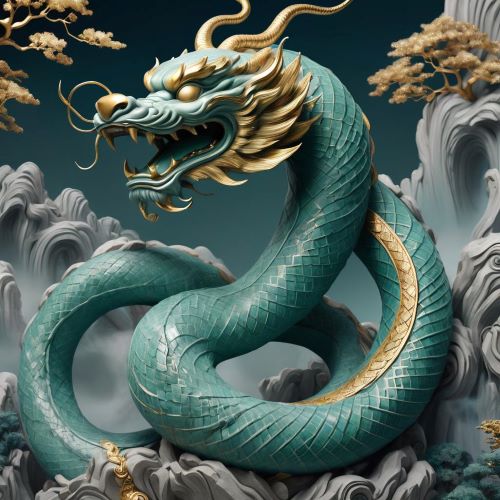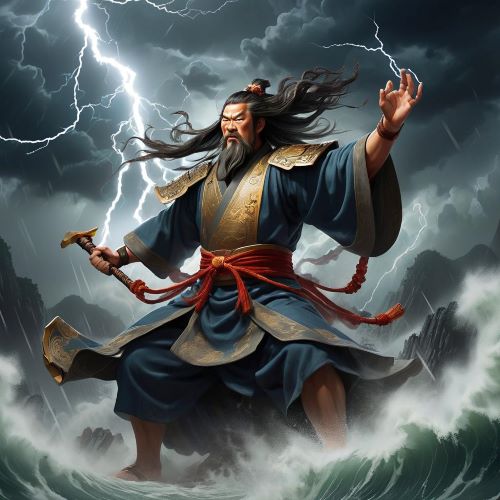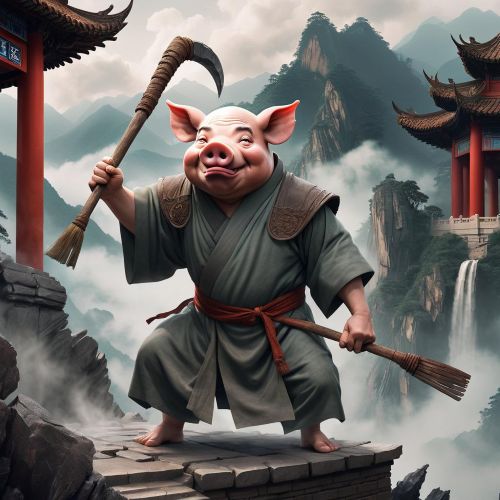Fei Lian : The Wind Spirit of Chinese Mythology
Listen
At a glance
| Description | |
|---|---|
| Origin | Chinese Mythology |
| Classification | Hybrids |
| Family Members | N/A |
| Region | China |
| Associated With | Winds, Storms |
Fei Lian
Introduction
Fei Lian is one of the most enigmatic wind deities in Chinese mythology, remembered for his wild, untamed nature and his powerful connection to storms and shifting weather. Often mentioned in classical texts such as Li Sao by Qu Yuan, Fei Lian embodies the unpredictability of the wind and the delicate balance between chaos and harmony that shaped early Chinese cosmology. Though later narratives sometimes merged him with the better-known Fengbo, Fei Lian maintained a unique presence across poetry, folklore, and religious symbolism. His mythological arc ranges from a primordial force of nature to a wind spirit whose ambitions challenged the early celestial order. This duality—both feared and respected—allowed Fei Lian to remain a compelling figure throughout centuries of storytelling.
Physical Traits
The physical appearance of Fei Lian is a striking blend of multiple animals, constructed to reflect the fluidity and unpredictability of his domain. Classical descriptions portray him with the head of a sparrow, a symbolic nod to the sky, yet crowned with horns reminiscent of a powerful bull. His body, often likened to that of a stag, emphasises agility, grace, and speed, while the leopard-like patterns sometimes referenced in ancient texts highlight his wild and volatile nature. Completing his form is a long serpent tail, reinforcing his connection to shifting, winding movement. These hybrid traits, assembled from creatures associated with strength, air, and agility, capture the essence of Fei Lian as a deity whose form cannot be confined to a single symbolic identity. Instead, he embodies the wind’s constant shifting and its refusal to be mastered.
Family
Unlike many figures in Chinese mythology whose genealogies are clearly documented, Fei Lian’s origins remain ambiguous. He does not belong to a structured divine lineage but exists more as an elemental force than a familial deity. Some traditions connect him to Fengbo, suggesting either a merging of identities or a hierarchy in which Fei Lian functions as an earlier, more primal aspect of the wind. In other myth cycles, Fei Lian appears alongside the rain deity, participating in a failed uprising against the Yellow Emperor, Huangdi. This association implies a symbolic relationship between wind and rain—natural elements that operate together but must remain in balance. Even without defined kinship ties, Fei Lian’s interactions with other deities highlight his role in the larger ecosystem of weather and cosmic order.
Other names
Fei Lian appears under several names across different regions and historical eras, reflecting both linguistic evolution and mythological reinterpretation. Variants such as Feilian, Fei Lien, and the simplified 飞廉 frequently appear in ancient texts. He is also linked to titles such as Feng Shi, meaning “Master of Wind,” and Xie Feng, an alternate designation used in some Daoist contexts. In certain narratives, his humanoid form is referred to as Fengbo, creating centuries of overlap between the two identities. These variations do not contradict each other but rather showcase how stories about the wind deity adapted to regional traditions and poetic interpretations. Despite the differences in spelling and pronunciation, all these names refer to the same powerful wind spirit whose presence shaped early Chinese understandings of weather and natural forces.
Powers and Abilities
Fei Lian’s abilities centre entirely on his dominion over the wind. Ancient records describe him carrying a wind bag made of animal hide, which he used to release powerful gusts and storms. When opened, the bag unleashed winds that could either nourish farmlands or wreak havoc across the land. This imagery closely parallels the wind bag of Aeolus in Greek mythology, demonstrating a shared global motif of controlling natural forces through sacred objects. Fei Lian’s flight is described as incredibly swift, allowing him to traverse vast distances with ease, reinforcing the idea that he is not merely a deity but the embodiment of wind in motion. His role in mythological conflicts highlights another facet of his power: wind used as a weapon. In one well-known tale, the archer Hou Yi shot an arrow that tore open Fei Lian’s wind bag, causing the winds to spiral out of control and forcing Fei Lian into retreat. This story symbolises humanity’s desire to restore balance when nature becomes overwhelming. Across all narratives, Fei Lian’s powers reflect both the creative and destructive capabilities of the wind.
Modern Day Influence
Although Fei Lian is not as globally recognisable as dragons or phoenixes, his influence persists within Chinese cultural expression. In literature, he appears as a metaphor for uncontrollable change, representing shifts in fate, emotion, and political turmoil. Traditional artwork depicts him in dynamic motion, reinforcing his association with movement and transformation. His myth continues to inspire modern fantasy writers, game designers, and animators, who frequently reinterpret him as a wind beast or guardian spirit. In contemporary ecological discussions, Fei Lian is sometimes invoked symbolically to represent the volatility of climate patterns. His presence in popular culture may be subtle, but his role as a primordial wind deity ensures that his legend continues to evolve alongside modern storytelling.
Heqet’s symbolic connection to the frog also carries environmental resonance today. As amphibians are sensitive indicators of ecological health, modern interpretations view Heqet as a reminder of nature’s fragility and the sacred duty to protect life in all its forms. Artists and writers have drawn on her dual role as mother and restorer to explore the balance between creation and destruction, echoing the eternal cycles of the Nile.
In popular culture, Heqet appears in books, video games, and educational series on Egyptian mythology, often depicted as a benevolent force of life and renewal. Her influence even finds echoes in unexpected places—such as the internet’s fascination with frog symbolism—where the ancient association between frogs, rebirth, and mysticism subtly persists.
Related Images
Source
Fei Lian – Chinese Mythology Facts and Figures. (2023, June 15). Godchecker. Retrieved November 14, 2025, from https://godchecker.com/mythology/fei-lian
Fei Lian: The Wind Spirit Rooted in Chinese Mythology. (2025, May 27). Spooklorepedia. Retrieved November 14, 2025, from https://spooklorepedia.com/fei-lian
Feilian. (2025, January 7). Wikipedia. Retrieved November 14, 2025, from https://en.wikipedia.org/wiki/Feilian
Berthold Laufer. (1917). The Wind Gods in Chinese Mythology. Journal of American Folklore, 30(117), 123-130.
Christie, A. (1968). Chinese Mythology. Hamlyn Publishing.
Eberhard, W. (1986). A Dictionary of Chinese Symbols: Hidden Symbols in Chinese Life and Thought. Routledge & Kegan Paul.
Hamilton, E. (2011). Mythology: Timeless Tales of Gods and Heroes. Grand Central Publishing.
Frequently Asked Questions
Who is Fei Lian in Chinese mythology?
Fei Lian is an ancient Chinese wind deity known for controlling storms and influencing weather patterns.
What does Fei Lian look like?
He is depicted as a composite creature with a sparrow’s head, bull horns, a stag body, and a serpent tail, symbolising the unpredictable nature of wind.
Is Fei Lian the same as Fengbo?
In later traditions, Fei Lian and Fengbo became associated or merged, though early texts treat them as separate wind spirits.
What powers does Fei Lian have?
Fei Lian commands the wind, uses a mythical wind bag to release storms, and can move swiftly across great distances.
Does Fei Lian appear in modern media?
Yes, Fei Lian occasionally appears in contemporary fantasy works, video games, and artistic reinterpretations as a wind-based mythical creature.



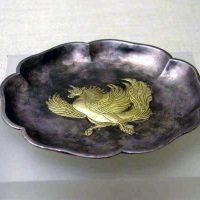
![Mythlok - Fei Lian art] Painting of the Chinese Wind spirit Fei Lian](https://mythlok.com/wp-content/uploads/2025/11/Mythlok-Fei-Lian-art-200x200.webp)



